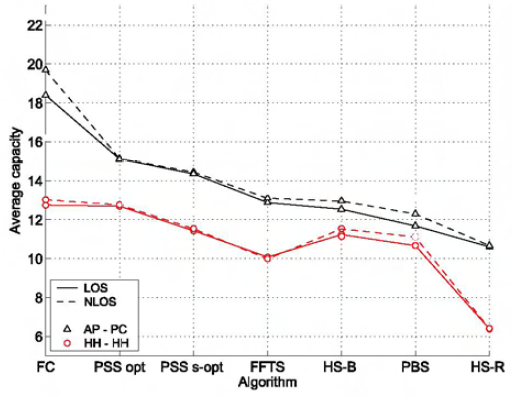TR2006-116
Implementation Aspects of Antenna Selection for MIMO Systems
-
- , "Implementation Aspects of Antenna Selection for MIMO Systems", International Conference on Communications and Networking in China (CHINACOM), October 2006, pp. 1-7.BibTeX TR2006-116 PDF
- @inproceedings{Molisch2006oct2,
- author = {Molisch, A.F. and Mehta, N.B. and Zhang, H. and Almers, P. and Zhang, J.},
- title = {{Implementation Aspects of Antenna Selection for MIMO Systems}},
- booktitle = {International Conference on Communications and Networking in China (CHINACOM)},
- year = 2006,
- pages = {1--7},
- month = oct,
- url = {https://www.merl.com/publications/TR2006-116}
- }
- , "Implementation Aspects of Antenna Selection for MIMO Systems", International Conference on Communications and Networking in China (CHINACOM), October 2006, pp. 1-7.
-
MERL Contact:
-
Research Area:

presented. Both AP-PC (8: 4 x 4: 2 vertical polarized element on both sides,
line configuration) and HH-HH (4 : 2 x 4 : 2 single polarized elements) results are presented for LOS and NLOS.
Abstract:
Antenna selection is a promising technique for reducing complexity of multiple-antenna (MIMO) systems. In antenna selection, more antenna elements than RF transceiver chains are available for up-conversion and down- conversion. A subset of the available antenna elements is selected and connected to the RF chains. The reduction in the number of RF chains helps to reduce the implementation cost of multi-antenna systems. This paper considers a number of \"practical\" issues in the implementation of such systems. We discuss schemes for the channel estimation for all all antenna elements, and show that antenna selection is robust to channel estimation errors. RF preprocessing can be used to enhance the array gain of antenna selection schemes; the performance is robust to errors in the RF elements used for the preprocessing Finally, we analyze both bulk selection and per-tone selection in MIMO-OFDM systems, and show that the former is usually preferable. Results from simulations with 802.11n-compliant systems, and capacity results in measured channels show that SNR and capacity gains can be achieved with antenna selection in practical situations.
Related News & Events
-
NEWS International Conference Communications and Networking in China (ChinaCom) 2006: 2 publications by Philip V. Orlik, Zafer Sahinoglu, Jinyun Zhang and others Date: October 1, 2006
Where: International Conference Communications and Networking in China (ChinaCom)
MERL Contacts: Jinyun Zhang; Philip V. OrlikBrief- The papers "UWB-based Sensor Networks and the IEEE 802.15.4a Standard" by Molisch, A.F., Orlik, P., Sahinoglu, Z. and Zhang, J. and "Implementation Aspects of Antenna Selection for MIMO Systems" by Molisch, A.F., Mehta, N.B., Zhang, H., Almers, P. and Zhang, J. were presented at the International Conference Communications and Networking in China (ChinaCom).
